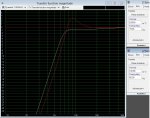Bennett - is there a good way to explain the model numbering system at B&C? PM or email me if you'd prefer.
Hey Max,
Sort of, but we try and avoid drawing too clear a link between a series and some intended application since we see all sorts of "unintended" applications and don't want to pigeonhole. You've got the right idea from the website. I normally suggest to OEMs that they let me know their application and I can make a suggestion using a combination of my ruthless intellect, crystal ball, and what I've seen someone else succeed with. So little about transducer behavior can be determined from T/S parameters, you can get in the ballpark but until you turn it up in your prototype box it's a crapshoot. On paper we're just another transducer supplier, eh? You're more than welcome to email me if you have some specific questions. [email protected]


